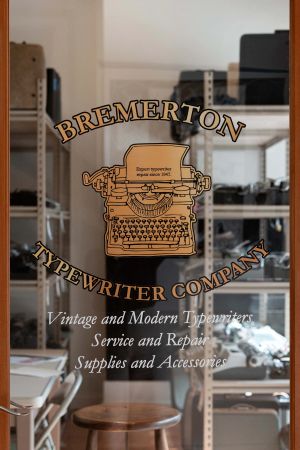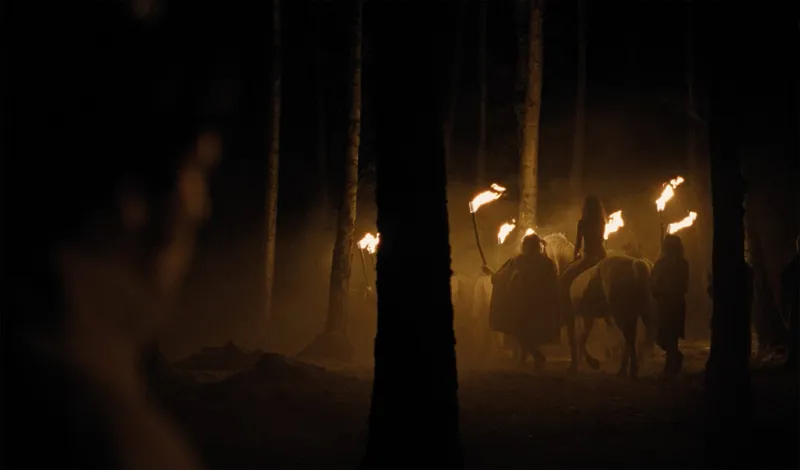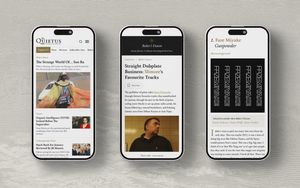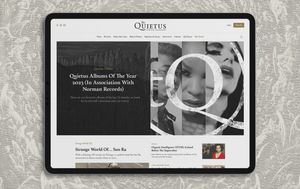Links
A regularly updated collection of things I find worth reading, watching, or listening to. Subscribe via RSS.
-
Mr. Scorsese
№ 118I've been rewatching Scorsese films these past two weeks (Killers of the Flower Moon, The Wolf of Wall Street, The Departed, Casino), so I was excited to learn about the new limited documentary series Rebecca Miller made on the director, called Mr. Scorsese.
I appreciated the documentary, learning more about Scorsese's older, brilliant work, and getting an inside look at films like Goodfellas, Taxi Driver and Gangs of New York. The man's a great storyteller, and at five episodes, I think it could've been a little longer still!
-

Photo by Neil Leifer for Sports Illustrated. The Thrilla in Manila, the fight between Muhammad Ali and Joe Frazier that took place in 1975, nearly killed them both. In this glorious (paywalled) piece of sports writing, Vann R. Newkirk II recounts the event, its lead-up, and its consequences. Incredible writing, putting you right in that scorching arena.
-
Your mind wants to move, and the best thing a work of art can do is take your mind with it, moving somewhere you never expected to move.
Anne Carson, interviewed at the Louisiana Literature festival in 2024. I watched it last year, and the conversation keeps resurfacing in my brain. An enigma.
-
Retirement Plan
№ 115A beautiful animated short film by John Kelly. I watched it earlier this week (thank you Simon!), and it just popped up in my head again, as I tried to read a few articles in an attempt to close a few tabs.
“When I retire, I'll read the 35 years of saved articles on my reading list.”
-
Bad Dye Job
№ 114Putting Alan Dye in charge of user interface design was the one big mistake Jony Ive made as Apple’s Chief Design Officer. Dye had no background in user interface design — he came from a brand and print advertising background. Before joining Apple, he was design director for the fashion brand Kate Spade, and before that worked on branding for the ad agency Ogilvy.
It's baffling this man was tasked with leading user interface design at Apple. Reads like a gigantic misstep, over on Daring Fireball.
-

Bremerton Typewriter Company, photography by Ruth Fremson. Finding Mr. Montgomery’s shop required determination. No sign marked the building; no indication that inside, five floors up, a master craftsman was keeping alive skills that predated the computer age. You took an elevator that groaned. When the doors opened, you knew immediately you were in the right place: a 1916 Royal Model 10 typewriter stood guard outside an open door, and the air smelled like oil.
I love pieces like these. Showing the craft, the getting up every day and plugging away at something, a thing you so admire. This one in particular reminds me of a time I visited a fella somewhere in Amsterdam, who repaired record players. Thorens, to be specific, and specialised in the type I have at home. Very kind, very skilled.
My thanks to Thomas, for sharing it.
-
I don't know why this happened at the office of The New York Times, but here we are. Erykah Badu hasn't released an album in forever, and it doesn't matter. Look at her aura as she floats into the room; you wouldn't dare ask her why. The performance is just about flawless.
Currently, she's celebrating the 25th anniversary of her landmark album Mama's Gun. Perhaps someday soon, that album she made with The Alchemist will see the light of day.
-
NPR’s “Books We Love”
№ 111
Great reads, thoughtfully curated by NPR. They've been doing this for a while, apparently, but I'd never come across it before; NPR added the year of 2025 to their Books We Love directory. You can use the sidebar on the left to filter for a combination of things (e.g. Staff Picks + Seriously Great Writing + Fiction), and then use the navigation up top to skip through the years.
I'm currently into short stories and essays, so this filter will be my go-to for now.
-

A still from Robert Eggers' Nosferatu (2024). Last week, I watched Robert Eggers' Nosferatu for the first time. I loved his work on The Witch and adored the madness of The Lighthouse, so was keen to see his take on this classic. And, it was breathtaking.
I watched it projected on a wall, sound blasting through a great installation, and the cinematography completely blew me away. The atmosphere they were able to create for this film is nothing short of astonishing. During a few scenes, I noticed I literally sat there with my mouth open. Visuals, audio, acting; everything's spot-on.

A still from Robert Eggers' Nosferatu (2024). CineD had a closer look at how they were able to get it done—especially the practical lighting, when seen onscreen, is magical.
-
The Quietus, revamped
№ 109
Earlier this year I noticed The Quietus got revamped, and I've been reading their work much more since then. The glow-up was done by 11:11, who took on the branding, design and development work.


The revamped The Quietus, all images courtesy of 11:11. I appreciate the tactile nature of the work; the combination of the typography and illustrations makes the site feel 'reader-first', if that makes sense—as opposed to most similar sites, where the writing is buried beneath a pile of ads, waiting to be excavated.